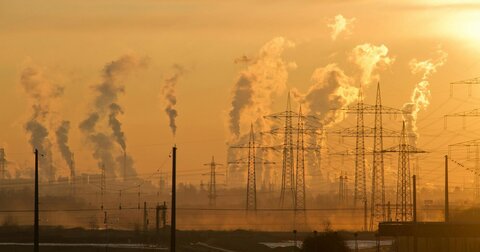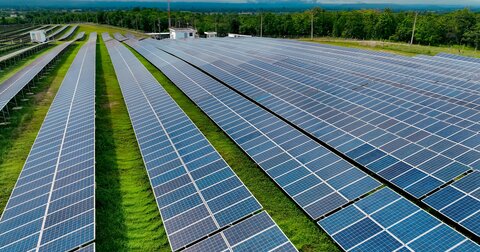Michigan will miss goal of net-zero emissions by 2050, climatologist says
State consumes too much power to rely solely on renewable energy
The state of Michigan will miss its goal of having net-zero emissions by 2050, according to John R. Christy, distinguished professor of atmospheric and earth sciences and State Climatologist at The University of Alabama in Huntsville.
“It has been said that the UK is first in the race to Net Zero because no one else has decided to run,” Christy told Michigan Capitol Confidential in an email.
Michigan consumes too much power to rely solely on renewable energy, Christy wrote. It consumes almost five times more energy than it produces, and it ranks 10th nationwide in population and total energy consumption, according to the U.S. Energy Information Administration.
In 2022, Michigan used 2,707 trillion British thermal units (2,235 trillion from fossil fuels) or 2,750 quadrillion joules (83%), Christy said, citing the EIA. A joule is a unit of energy measurement.
Nuclear accounts for more than half the energy that does not come from fossil fuels, Christy said, so renewables (excluding hydropower) accounted for about 175 trillion BTUs (7%).
“Because of renewables’ unreliable dependence on weather and high expense, the only way to provide non-carbon power that people need is nuclear — and that’s only if nuclear produced enough electricity to charge all of the electric vehicles too,” Christy wrote.
“For an average second, MI consumed energy at the rate of 90,000,000,000 joules, or a rate of 90 gigawatts. How can renewables in MI create an average of 90 gigawatts (much more during peak hours)? MI would need to switch to all EVs and add about 10 times more nuclear power than it has now.”
Gov. Gretchen Whitmer says Michiganders can thrive by using electricity generated from wind and solar power.
“This plan will protect Michiganders’ public health, protect our environment, and help develop new clean energy jobs by putting Michigan on a path towards becoming fully carbon-neutral by 2050,” Whitmer posted on social media.
In 2023, renewable energy, mostly from wind turbines, provided 11% of Michigan's total in-state electricity net generation.
Michigan aims to have 100% of its energy come from renewable sources by 2040.
DTE Energy serves 2.3 million customers with electricity in southeastern Michigan.
“Climate change is one of the defining issues of our era,” DTE said on its website. “That’s why DTE Electric is taking bold steps to significantly increase our investments in renewable energy and cut carbon emissions in half over the next 10 years to reach our goal of net zero carbon emissions by 2050.”
The company wrote in its 2022 electric resource plan that its targets and aims for capital expenditure “are subject to change, and are aspirational and not guarantees or promises that all targets, goals and objectives will be met.”
Consumers Energy, which provides electric power to 1.8 million customers, has similar ideas
“Consumers Energy is well on track to achieving the ambitious clean energy goals laid out in our Clean Energy Plan,” spokeswoman Tracy Wimmer told CapCon in an email.
In 2024, the utility announced renewable energy projects that will bring 691 megawatts of alternative energy and energy storage online in the coming years. The projects include wind, solar, renewable natural gas facilities, and battery storage capacity.
Consumers Energy lists 37 reasons why it might miss the goal. These include: increases in demand for renewable energy, energy market changes, stock prices, financial market conditions, supply chain problems, population changes, loss of customer demand, insurance costs, infrastructure disruption, risk management policies, fuel supply disruptions, customer billing, or “other matters that may be disclosed from time to time in CMS Energy’s and Consumers’ SEC filings, or in other public documents.”
New state or federal regulations, a government shutdown, or “effects of a lack of quorum of a regulatory body” could also cause the utility to miss net-zero by 2050, according to paperwork the utility filed with the Securities and Exchange Commission.
Pipeline and railroad regulations change, potential effects of the Dodd-Frank Act, or even health care reforms could knock the plan off track, it said.
Posting inappropriately on social media, employee violations of corporate policies, and other bad “reputational impact” on CMS Energy and Consumers could be a reason why the utility misses the 2050 goal.
The utility also said that potential disruption to facilities, operations, infrastructure or backup systems from an accident, explosion, disaster, cyber incident, vandalism, war, or terrorism could make it miss the 2050 goal.
Michigan Capitol Confidential is the news source produced by the Mackinac Center for Public Policy. Michigan Capitol Confidential reports with a free-market news perspective.


 Michigan ratepayers pick up energy tab of 55,732 households
Michigan ratepayers pick up energy tab of 55,732 households
 Whitmer signs clean energy package; it will cost you
Whitmer signs clean energy package; it will cost you
 Michigan energy regulator considers penalties for mass power outages
Michigan energy regulator considers penalties for mass power outages

 Clean energy isn’t clean
Clean energy isn’t clean
 37 states have cheaper electricity than Michigan does, report says
37 states have cheaper electricity than Michigan does, report says